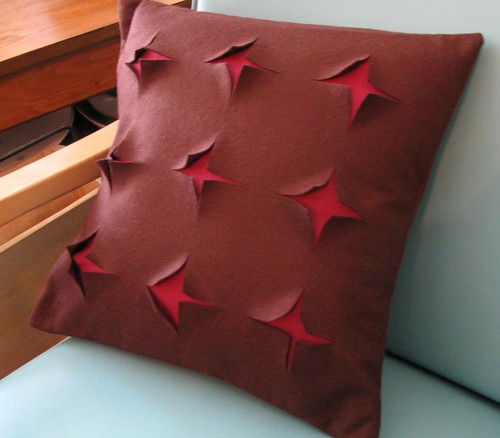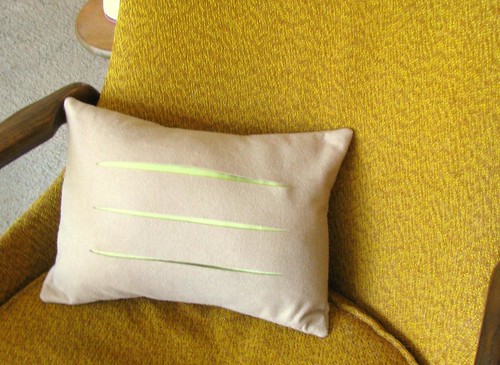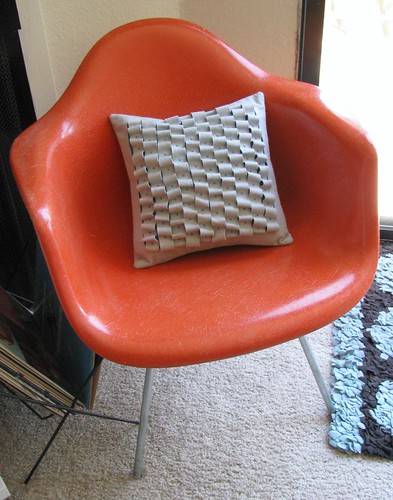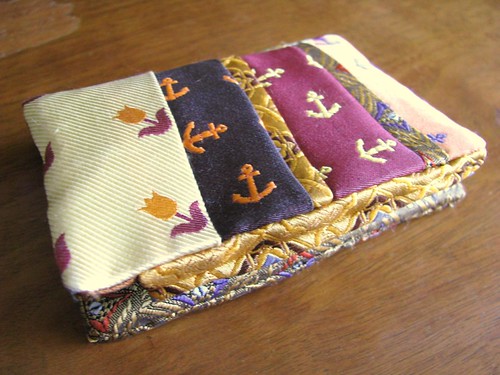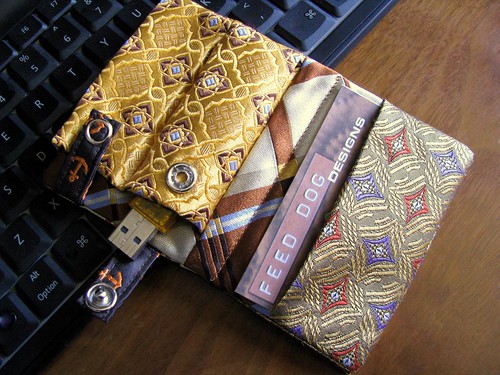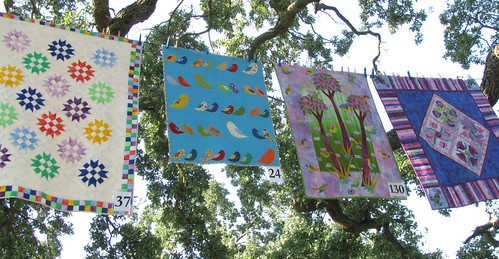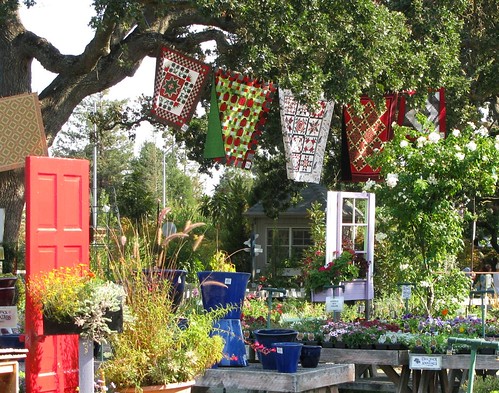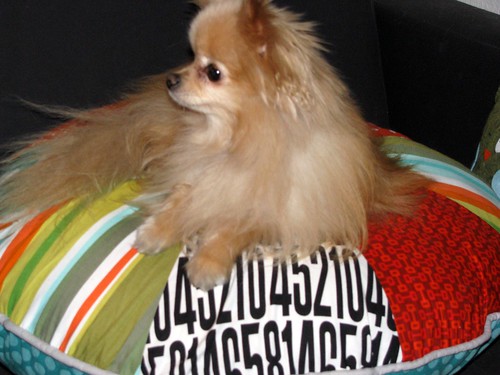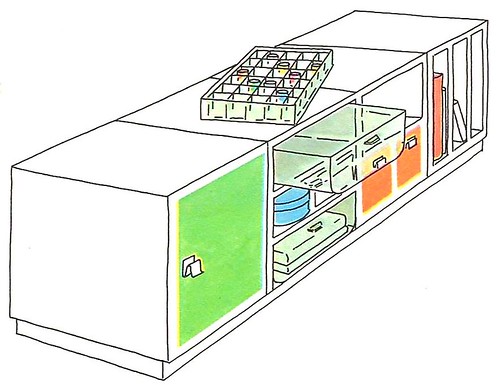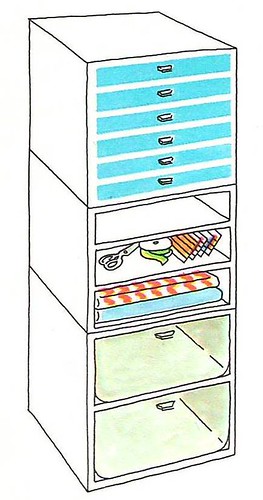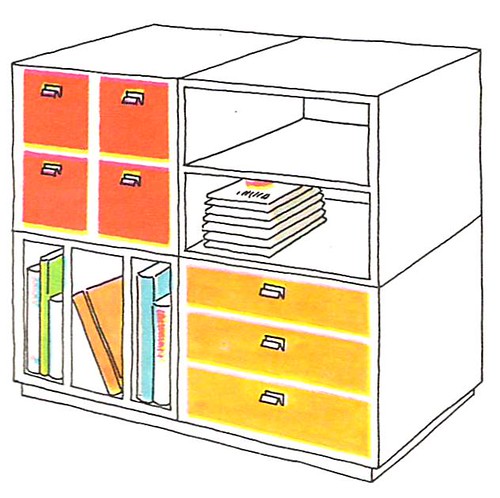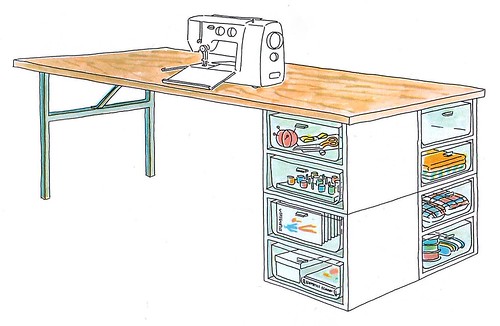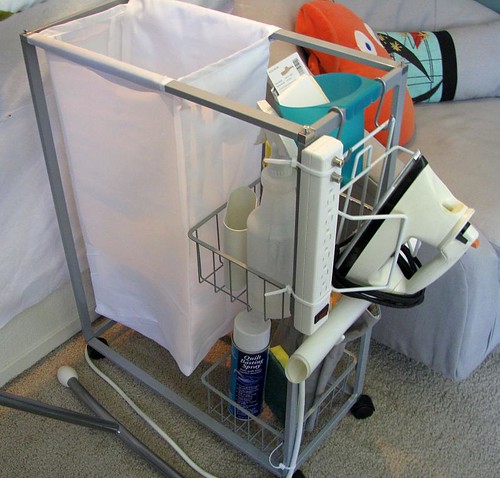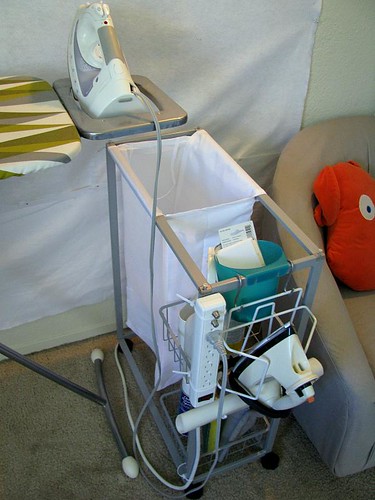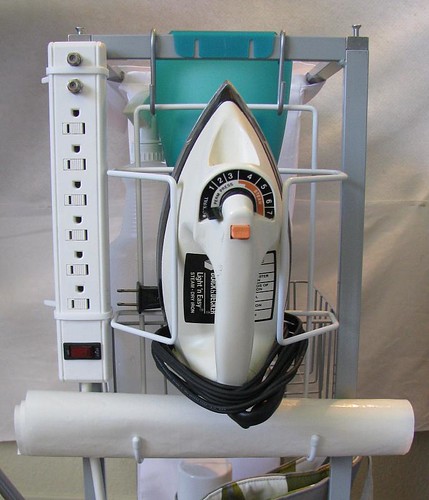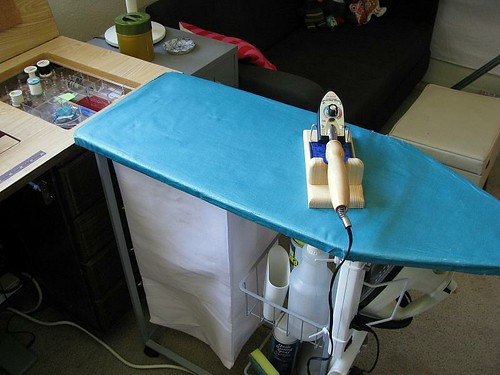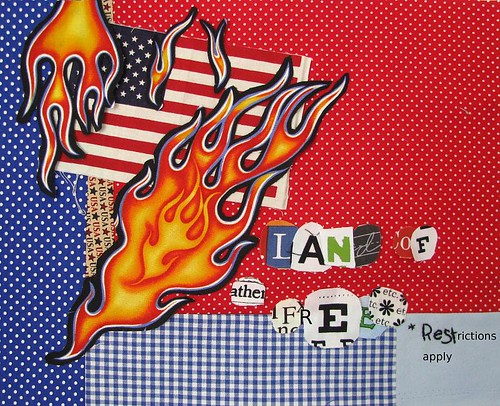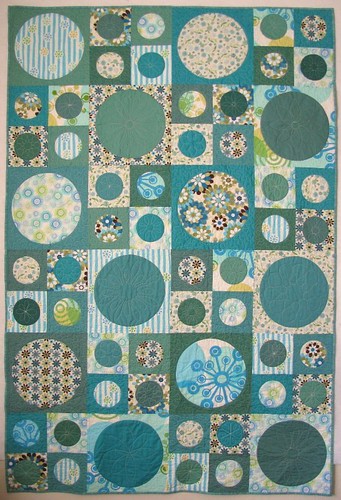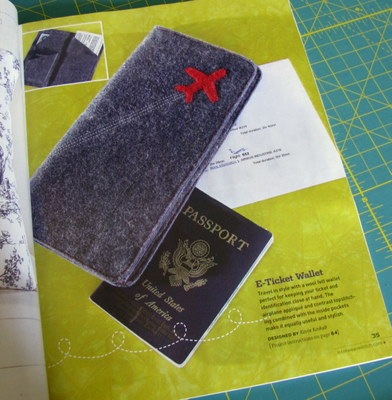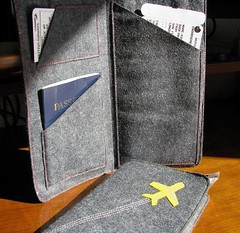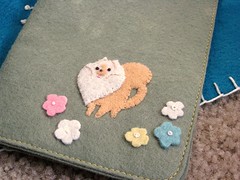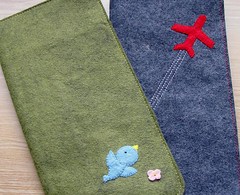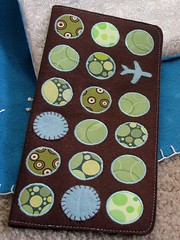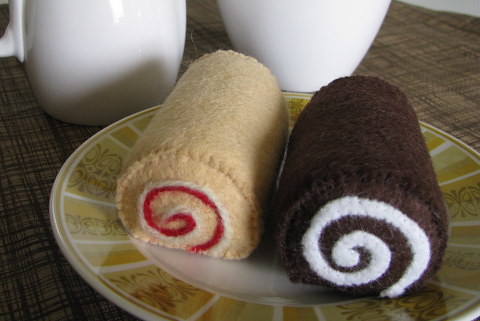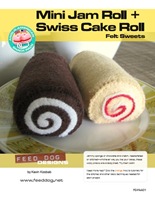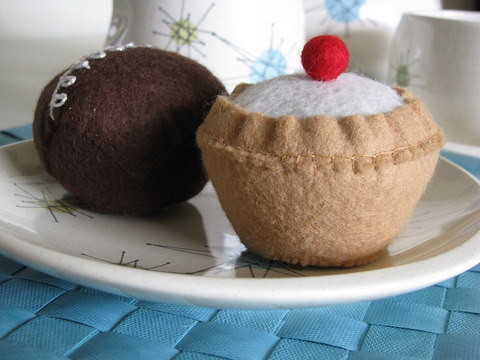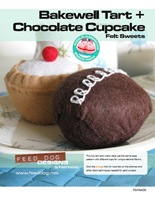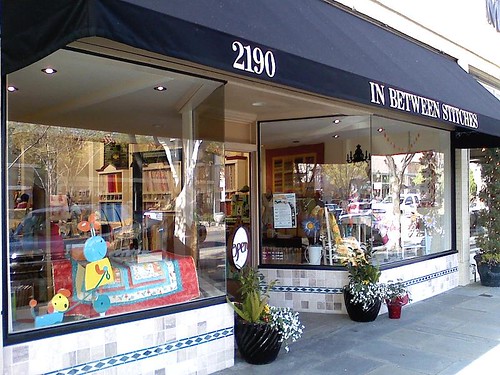I hadn’t planned on this being the next stop on my sewing room series, but Itso storage cubes and the bins, casters, and other bits are on sale at Target through tomorrow, so the time is now! I’ve fallen hard for the system—it’s well suited for quilting stuff, and it’s quite customizable even beyond the officially offered accessories. Read on!
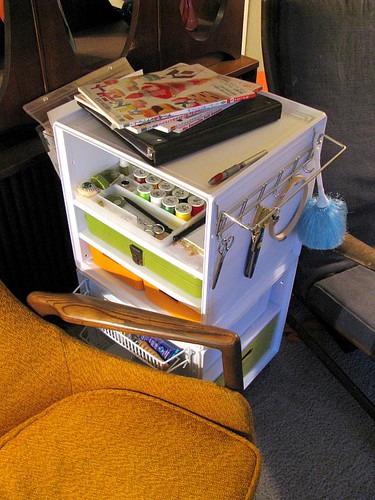
I do a lot of appliqué, felt sewing, and other handwork in front of the tube, so this first little number is actually a satellite to my actual sewing room. To corral all the threads and notions that were accumulating next to the chair Felis Domesticus and I fight over, I wanted a Sonne taboret-ish thing from Ikea—quite useful for sewing, it seems—but alas it’s been discontinued. So I built a similar something from the Itso cubes, with bins for felt, flosses, and such. The hooks with the scissors, embroidery hoop, and, mysteriously, a feather duster are part of a towel bar attached with pegboard hooks through the predrilled holes of the cube. A spice rack was attached the same way to add a few small shelves (mostly obscured by the chair), as was a wall file bin on the back, great for the patterns, magazines, and books that always pile up. But the whole thing was a little too tall to be practical, so I consolidated…
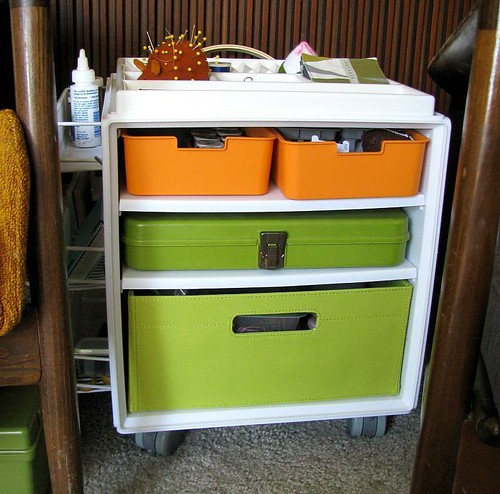
The green box on the middle shelf is a vintage Wil-Hold thread box (one of many I’ve scavenged) that holds my hand-appliqué thread; I was delighted that it slid into the cube so smashingly. The big bin on the bottom still holds felt for when that urge strikes, but it can be easily swapped out for other project boxes.
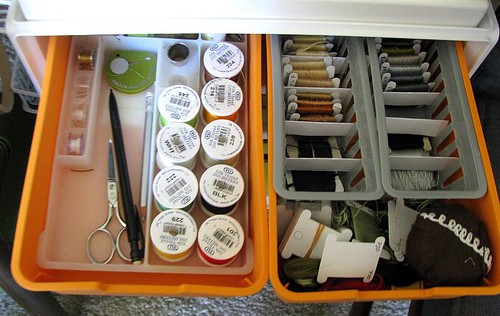
The tray wedged into the orange bin on the left holds my main handwork tools and threads pulled for projects in progress; when I’m taking hand-sewing on the go, the tray goes back into the Wil-Hold box sewing box from whence it came. Embroidery flosses are in the other orange bin.
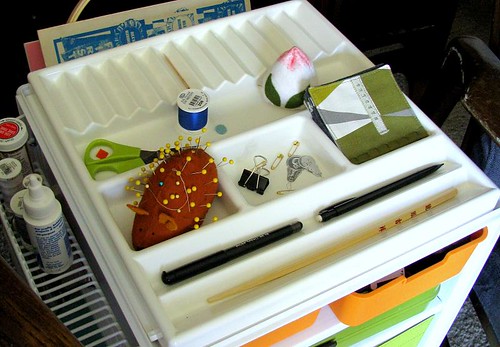
Packs of Anordna cosmetic trays were deeply discounted on our last Ikea trip; while they’re too wide as-is to slide into the cubes, this one nestles nicely on top with places for a pincushion, marking tools, and anything I need at hand. Eventually perhaps I’ll come up with something impossibly clever to do with the lipstick holders. (Take up drag and fill it with lipsticks? Too pedestrian.)
Now, moving into the sewing room proper…
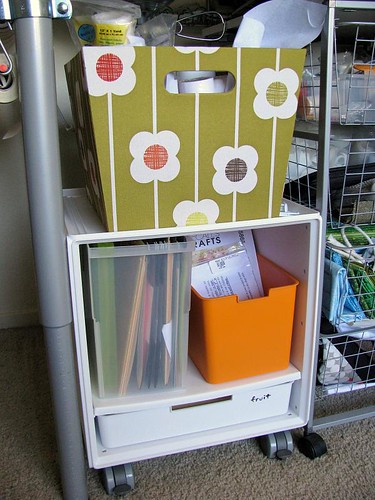
When the Handwork Trolley Mark I came apart, this is where the top cube went—under my cutting table (more on that in a future post). The square Itso bins, as on the bottom here, are perfect for 12-inch quilt blocks, with ample room even with seam allowances included. So each quilt gets a block box; this one is the one I’m working on now, handy for reference at the cutting table (raw fabric for projects in progress are in the wire bins at the edge of the photo). The file box holds patterns printed from the PC and templates in folders, while the orange bin is perfectly sized for commercial quilt patterns. It’s a slightly tighter fit for sewing-pattern envelopes or oversized quilting patterns, but the 6-by-9-inch ziplock baggies work great. I don’t keep all my project files here, but I love being able to pull the file or pattern I’m working on without leaving the cutting table. The Orla Kiely box on top holds spray adhesives, interfacings, and small rolls of fusible web, also handy to have accessible at the cutting station.
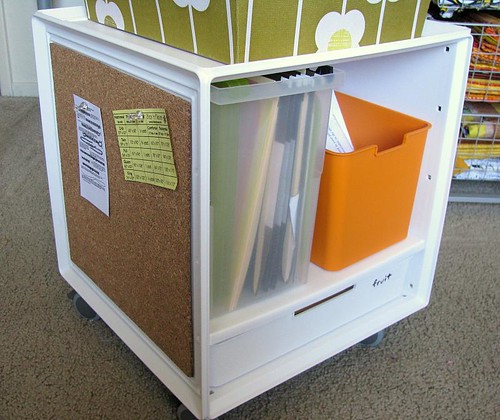
A 12-inch cork square fits right into any side of the cubes, so there’s a small bulletin board on the cutting table cube, too. I’ve infected the Other with this Itso sickness; he likes putting the cork on the top of the cubes to make a nonskid surface.
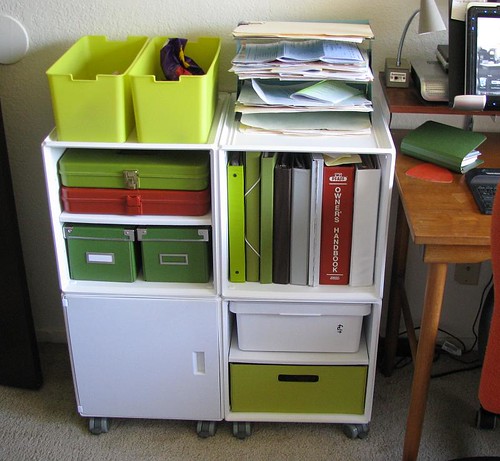
This final arrangement of cubes is next to my desk, hence the messy stack of files. One cube holds reference binders for quilting, sewing, and my sewing machine; the bins and boxes hold more felt and office junk. The two thread boxes are—gasp!—empty, so they can’t really justify the space they’re taking and may have to move along. Also not fully used are the two green bins up top, but that’s because they’re waiting for inventory for my forthcoming pattern line! I haven’t felt compelled to make any dry-erase notes on the cupboard door, though Target assures me that’s what it’s for.
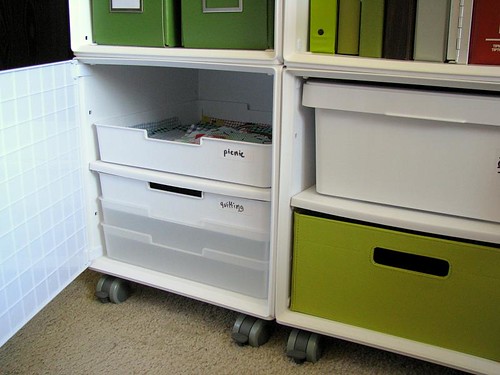
Behind the door are more block boxes. The shelves, at $4.99 each without a sale, are the hidden killer in the cost of all this Itso stuff, so take note that an empty cube, or one with a single shelf, will hold six block boxes, while putting the max of three shelves in will hold only four boxes and cost a lot more! That is, as long as you don’t mind them nestling into one another.
So, do I seem nuts yet? I think of organizing as a hobby, which is why my sewing room is always messier than these tidy storage units make it look. If you suffer from a similar dysfunction, I hope you’ve picked up a few ideas. And if you’ve read this far, I thank you with a gratuitous photo of Miss Fluffenstuff.
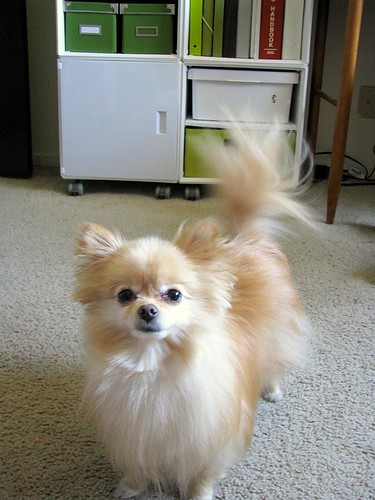

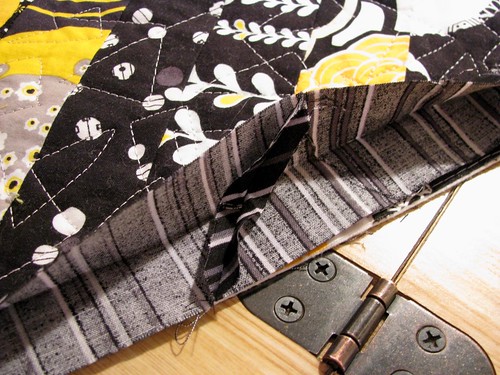
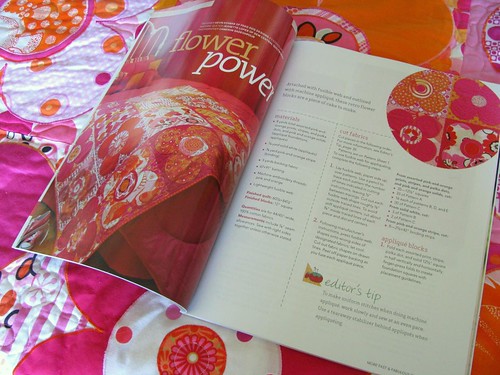

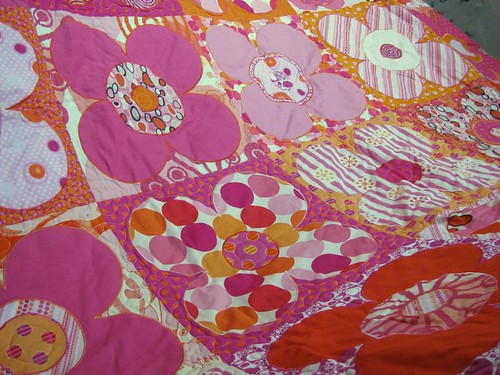
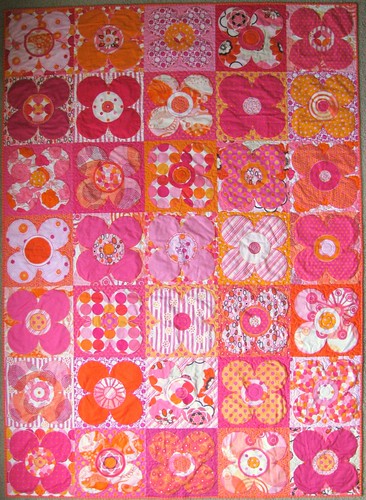

 The extra-big Fall issue of
The extra-big Fall issue of 